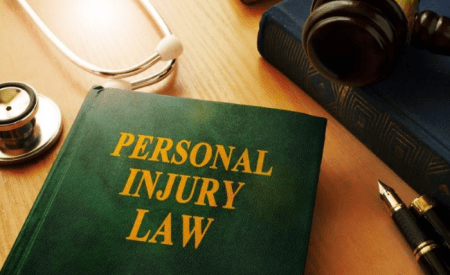Introduction to Asbestos Litigation
Asbestos litigation is a complicated and frequently challenging legal field that deals with the effects of asbestos exposure. Several people, especially those in construction, shipbuilding, and similar fields, could experience illnesses long after exposure. It is essential to have a comprehensive grasp of the legal rights and available options. For those needing a Chicago asbestos lawyer or seeking to comprehend their legal stance, navigating this intricate field is vital. Asbestos litigation aims to provide justice and compensation for the harm done by these once-ubiquitous materials.
These cases often face challenges like proving exposure, linking it conclusively to specific health conditions, and dealing with the responsible companies that may have since dissolved. Specialized legal professionals in this field work tirelessly to navigate these challenges, ensuring victims receive fair compensation and the acknowledgment of their ordeal.
The History of Asbestos Litigation
Asbestos litigation in Chicago has developed over the years alongside increasing awareness of the health risks associated with asbestos exposure, such as asbestosis and mesothelioma. In the 1970s, individuals began filing lawsuits against companies for negligence as the dangers became more recognized. Due to increased claims, especially in Chicago’s industrial sectors, specialized legal practices emerged during the 1980s and 1990s, resulting in numerous companies filing for bankruptcy to handle the surge in lawsuits.
Even as the use of asbestos has declined, claims continue due to the long latency period for related diseases. With ongoing trials and settlements, Chicago remains a significant hub for asbestos litigation. Fresh concerns have arisen, such as asbestos exposure in aged public structures, leading to ongoing calls for more stringent rules and increased consciousness of the dangers linked to historical asbestos.
Understanding Asbestos Exposure
Asbestos exposure occurs when asbestos fibers become airborne and are inhaled or ingested, often in environments where asbestos-containing materials are disturbed. This could be during the demolition or renovation of buildings constructed before the 1980s, which frequently used asbestos for their fire-resistant properties.
Common Diseases Linked to Asbestos
Asbestos exposure is associated with various serious health issues, with the most notable being mesothelioma, a fast-growing cancer that impacts the lining of the lungs, abdomen, or heart. According to the National Cancer Institute, approximately 3,000 mesothelioma cases are diagnosed in the United States annually. This condition is exceptionally challenging to treat and is directly correlated with asbestos exposure. Other serious diseases include lung cancer and asbestosis, a fibrotic lung condition that causes breathing difficulties and increases the risk of more severe respiratory illnesses.
Legal Framework Surrounding Asbestos Cases
The legal framework governing asbestos cases is multi-faceted, consisting of state and federal laws designed to protect individuals from dangerous exposures. Central to these efforts are laws like the Toxic Substances Control Act and the Asbestos Hazard Emergency Response Act, which regulate asbestos use and mandate safety in schools and workplaces. The legislation’s primary goal is to prevent exposure and protect public health while ensuring victims have the legal recourse to seek justice. Despite regional differences, federal regulations underpin the safeguarding statutes and form a core part of asbestos litigation strategies across the United States.
Steps in Pursuing an Asbestos Case
Pursuing an asbestos-related lawsuit involves several critical steps. Initially, it requires understanding one’s eligibility to file a claim, often involving medical diagnoses proving a direct link to asbestos exposure. The next crucial step is consulting with a legal professional experienced in asbestos litigation. Specialized attorneys will guide you through the complexities, from collecting comprehensive evidence to proceeding through potential settlement discussions or a trial. Each step aims to build a robust case that convincingly demonstrates the sufferer’s claims and yields favorable compensation.
The Role of Evidence in Asbestos Claims
Central to the success of asbestos claims is the gathering of robust evidence, which involves collecting medical records, employment history, and detailed accounts of exposure. The meticulous documentation process is not merely procedural but pivotal in reinforcing the case against the defendants. This thorough documentary proof positions plaintiffs advantageously, particularly when negotiating settlements or presenting claims in court.
Compensation and Settlements in Asbestos Litigation
Asbestos litigation commonly aims to receive compensation for various harms, such as medical bills, lost wages, and non-economic losses like physical and emotional pain. The amount of compensation received can vary significantly based on factors such as the seriousness of the illness, the individual’s history of exposure, and the legal responsibilities determined in court cases. Even though many cases are resolved without going to court, providing victims with quick financial assistance and avoiding long legal battles, the specific terms of these settlements are determined through discussions between knowledgeable lawyers. Ultimately, these agreements offer a degree of fairness, balancing out the significant impact of asbestos exposure on those affected and their loved ones.
Conclusion
A thorough understanding of asbestos litigation is crucial for individuals affected by asbestos-related health problems. The existing legal systems and channels offer financial compensation and are essential in advancing public health and legal changes.
Understanding and utilizing the correct legal pathways is crucial for individuals impacted by asbestos exposure to obtain fair compensation and advocate for safer practices for the benefit of future generations.







